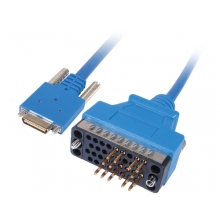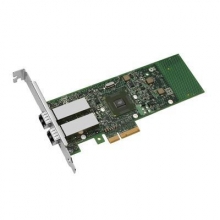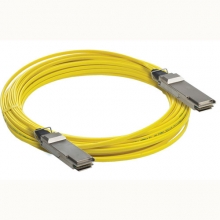- Optical Transceivers
- SFP+ Transceivers
- XENPAK Transceivers
- XFP Transceivers
- X2 Transceivers
- SFP Transceivers
- Compatible SFP
- 3Com SFP
- Alcatel-Lucent SFP
- Allied Telesis SFP
- Avaya SFP
- Brocade SFP
- Cisco SFP
- D-Link SFP
- Dell SFP
- Enterasys SFP
- Extreme SFP
- Force10 SFP
- Foundry SFP
- H3C SFP
- HP SFP
- Huawei SFP
- Intel SFP
- Juniper SFP
- Linksys SFP
- Marconi SFP
- McAfee SFP
- Netgear SFP
- Nortel SFP
- Planet SFP
- Q-logic SFP
- Redback SFP
- SMC SFP
- SUN SFP
- TRENDnet SFP
- ZYXEL SFP
- Other SFP
- FE SFP
- GE SFP
- OC3 SFP
- OC12 SFP
- OC48 SFP
- Copper SFP
- CWDM SFP
- DWDM SFP
- BIDI SFP
- Fiber Channel SFP
- Multi-Rate SFP
- SGMII SFP
- Compatible SFP
- GBIC Transceivers
- Passive Components
- Networking
- Cables
- Equipments
- Tools
- Special Offers


In San Leandro, a Drive to Get Wired in his hometown
SAN LEANDRO—Pat Kennedy believes high-speed communication is so essential to business that he is spending $3 million of his own money to build a fiber-optic loop in his hometown of San Leandro. The move is intended to help his software company expand and ramp up the technology industry in the East Bay.
Mr. Kennedy is chief executive of OSIsoft LLC, which does data monitoring for utilities, refineries and "anything with a smokestack." His company moves large amounts of data over the Internet each day and its data needs are growing.
About a year ago, Mr. Kennedy says, he decided he needed to do something to accommodate his company's growth in San Leandro. With the city's blessing, he set up a company called Lit San Leandro that is creating an 11-mile fiber-optic loop to ring the industrial zone on the western side of the city.
Fiber-optic systems transmit data down glass wires with pulses of light from lasers, offering speeds that are at least 100 times as fast as the level of broadband service typically offered to homes. For example, a fiber-optic loop can download a movie in roughly one second, says Judi Clark, a telecommunications consultant who is working with Lit San Leandro. And it offers equally fast upload and download speeds.
The first piece of fiber, serving OSIsoft, was activated on March 2. Mr. Kennedy expects the whole loop—which will be marketed to businesses but not individuals—to be completed in a few months.
Mr. Kennedy and city officials hope the loop will attract tech companies to San Leandro that might otherwise gravitate to Silicon Valley, where cities like Palo Alto and Santa Clara already have their own loops for tech giants like Intel Corp. and Oracle Corp. "It's a honey pot to attract innovators," he says.
Real-estate experts say San Leandro might be a hard sell for some tech companies that want easy access to Silicon Valley's labor force. Even though San Leandro has two BART commuter-rail stations, the line doesn't include Santa Clara County, so commuters would need to cross San Francisco Bay on often-congested freeways.
Mr. Kennedy agrees San Leandro is more easily reached from other parts of the Bay Area and it doesn't have the cachet of Silicon Valley, but says the city of 85,000 has amenities that manufacturers value, such as good freeway and rail access, its own sewage treatment plant, and cheaper rents. Nearly a quarter of San Leandro is zoned for commercial or industrial use, and the city has resisted the urge to rezone it for other things.
"The city has always believed industrial land is important for jobs," says Cynthia Battenberg, San Leandro's business-development manager. She says businesses are interested in the fiber loop and there has been no opposition from any quarter.
Like many Bay Area cities, San Leandro has lost manufacturing companies in recent years. It still has plants that make Ghiradelli chocolates and Mi Rancho tortillas, among other products, but has lost plants that make Kellogg's cereals and Golden Grain pasta. Decades ago, the city also had heavy manufacturing, with two auto manufacturing plants. Today, there are at least two dozen vacant properties with more than 10,000 square feet of space available within reach of the fiber loop, according to city officials.
Gary Fracchia, a commercial broker and partner at Cassidy Turley in Oakland, says it isn't the first time the city has tried to lure high-tech companies, with limited success, but that the fiber loop "will help." He is looking for someone to lease a 140,000-square-foot space that is within the loop and says the rent, at 55 cents to 65 cents a square foot, is "about half" what it would cost in Silicon Valley.
San Leandro's loop is small compared with Santa Clara's. Santa Clara started its fiber backbone in 2000 with three customers for its 26-fiber-mile loop. It now has about 20 commercial customers, including companies catering to social media and Web search, and 57 fiber miles. Companies pay for fiber-optic access depending on the level of service they want and amount of data they move. Revenue from the service has grown from about $350,000 the first year to $2.13 million, and it returns $300,000 to $500,000 to Santa Clara each year.
"Our aim is not to turn a big profit but to foster business development," says Debby Barry, fiber program manager for Silicon Valley Power, the electric utility that runs the program in Santa Clara.
Communications experts say cities need high-speed Internet access to compete for the most tech-savvy companies, especially those involved in large data transfers like gaming, software and Web services. But even companies that aren't often generally thought of as tech companies, like hospitals, have rapidly growing data needs.
Mr. Kennedy says San Leandro's fiber optic-needs are modest today, but "you build it for where you're going, not where you've been."
Lit San Leandro plans to sell service using a subscription model and is still developing pricing. In exchange for access to the city's underground pipes, the city of San Leandro is getting 10% of the fiber system for its own use. Partnering with the city, Mr. Kennedy says, has eliminated bottlenecks in getting permits.
The Lit San Leandro team is also working with development efforts in nearby cities like Hayward, Castro Valley and Oakland. Ms. Clark, the telecommunications consultant, says fiber expansion anywhere is good because "it will produce productivity gains for the whole region."



















































